With AFI and USC dominating this year’s seven finalist slots, this year’s batch of Student Academy Award nominees continue to highlight a diverse, colorful blending of genres from filmmakers of all walks of life. Whether feminist dystopian sci-fi or electrically choreographed musicals, there’s something here for everyone, and it shows in the backgrounds of each of these talented directors. In this interview series, Film Section Editor Sergio Zaciu sat down with all seven finalists of 2019’s Narrative – Domestic section, hoping to learn more about their personal backstories, what brought them to the director’s chair, how they made their respective films, and what exciting prospects await them next in their careers.
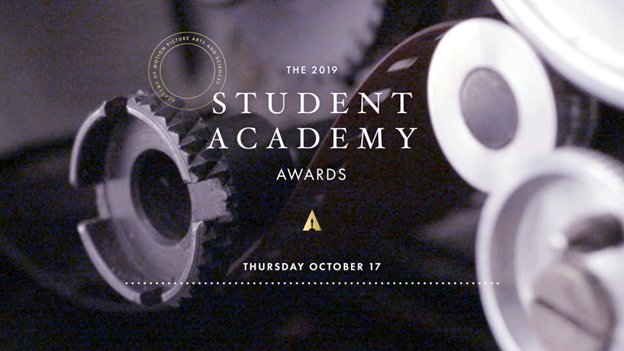
AFI hit the Student Academy Awards like a wrecking ball this year, racking up five out of the seven finalist slots in the Narrative – Domestic section. Among them is Asher Jelinsky’s MILLER & SON, a bittersweet tale of a transfeminine mechanic living a double life in the United States. Caught between a profession that is often viewed as hypermasculine and a feminine gender identity, Jelinsky’s film comes to a slow, melancholy boil as her identity is revealed to a fellow co-worker. Gorgeously photographed in a 4:3 aspect ratio and effortlessly performed by a powerhouse ensemble, MILLER & SON is the rare Student Academy Award nominee that falls squarely into the stylings of an emotionally resonant art-house release.
Tell us a little bit about yourself! Where are you from and what got you into filmmaking?
I’m from the Bay Area. I was interested in everything growing up, but first got into filmmaking when I took a media studies class in my freshman year of college. I worked at the school’s production center and was able to check out equipment and play around with cameras, so I got more familiar with the process. But I didn’t really consider it as a career until several years after finishing undergrad. I studied both media studies and public health and dabbled in both fields before ultimately deciding to pursue writing and directing.
What drew you to AFI, specifically?
I was looking at various film school programs, but what I really liked about AFI was how discipline-specific it was. I knew I wanted to write and direct and wanted to meet other artists who were very focused on their disciplines.
So, about your film, MILLER & SON, why make your protagonist a mechanic?
That’s a good question! I wanted to set the story in a family-owned auto shop to heighten the stakes. The job of a mechanic is a very physical one and lends itself to a cinematic portrayal, and dealing with a character who is gender non-conforming, who is a trans woman, I wanted to pick a place that represents traditional American values and masculinity to juxtapose the protagonist’s more expansive experience of gender.
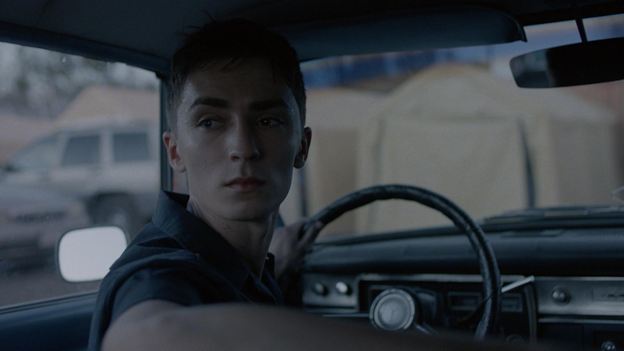
What exactly was it that brought you to the story of a transwoman? Did you initially want to tackle an LGBTQ+ issue, or did the idea of a trans mechanic immediately hit you?
Well, I’m gender non-binary, so it’s important to me to see more representation of characters who are trans. So that interest in community came first. But yeah, I wanted to show a character whose interest in mechanics was just as important to her identity as her trans identity. I think that the narrative of trans stories is often so hyper-focused on gender that it doesn’t usually focus on other aspects of life. So that’s definitely something I was focusing on.
Yeah, that’s something that caught my eye while watching it, which is the notion that the character is really good at her job. It’s not like she feels obligated to do it as part of a duty to her father. And I think that ending is a beautiful thesis statement to this idea, where both characters say good night to each other, but you leave it open as to whether or not they’ll ever see each other again. Was the intention there to leave that ending ambiguous?
I did want to end the film with a question. For me, there’s hope that they can work on their relationship in the future. But things don’t get resolved so quickly. I didn’t want the father just pushing her out, but I also didn’t want to wrap up everything in a bow. The ambiguity of if they’ll ever be close again was something I was interested in exploring. I wanted the audience to know that they both love each other. Sure, the father says “see you tomorrow,” but beneath that line is “I love you.” But to come around to that he needs time to grow.
I’m curious about the writing process. Unlike a lot of the other nominated films there’s not really a ticking clock. It’s more about the character’s internal struggle rather than some external want. Can you talk about writing that type of movie, since it somewhat goes against the grain of what a traditional screenwriting class would teach?
Yeah, that’s an interesting point. I wanted to make the audience live the experience through the character’s perspective. I’m not really a writer who insists on hitting certain beats. I’m more interested in really feeling with intuition what the character is experiencing and how the environment can work against what they want. So in this case the character is afraid of what could be revealed. So it becomes about playing with the mystery of what the co-worker knows, what the dad knows, and all that. I don’t know if that really answers the question, but I think in terms of structure it’s important for the audience to see what these two worlds are like (the autoshop and the queer nightlife) so that when they collide, the narrative has a newfound intensity.
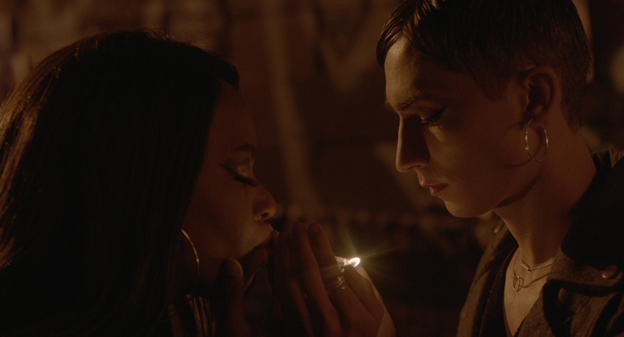
My favorite scene is actually the one where they’re all drinking beer after work. You do something here that I think is a very deliberate subversion of the tropes we’ve seen in LGBTQ+ stories, which is that there isn’t any clear tension or discomfort on the protagonist’s part that pertains to being in this space. She’s quite comfortable having a beer with her father and co-worker. I think that’s a pretty cool way of playing into the idea that she fits into both of these worlds. Can you talk about that a bit?
One thing that Ryan is doing is compartmentalizing certain aspects of her identity depending on what world she is existing in. Just because she isn’t exhibiting certain aspects of her transfeminine identity doesn’t necessarily mean that she is totally uncomfortable. Hanging out after work with her dad and coworker allows the film to analyze this idea of compartmentalization. People express themselves differently in different circumstances. I think this idea of code-switching is something a lot of people can relate to.
This kind of brings me to the next topic, which is the production. Can you talk about casting? How did you find your lead? They’re really amazing. Since you discussed compartmentalization, it’s one thing to write that, but it’s another thing to find someone capable of depicting it so vividly.
I really wanted to cast someone who is trans or non-binary. That was something that was really important to me. We cast a wide net and reached out to community centers and various casting agencies. Ultimately we found our lead through a self tape. Jesse [James Keitel] is based out of New York. I was really impressed and we made the decision to fly them out for the film. We worked with Russell Boast as our casting director, who is the president of CSA now and works on the diversity and inclusion committee of CSA, so he was really committed to this project.
So you fly Jesse out. How much time did you have to rehearse?
Jesse was here for a little under a week before we shot. So some of that was rehearsal, and some was wardrobe and fittings. But a big part of the “rehearsals” was taking Jesse to the auto shop to practice the various physical tasks of mechanics.
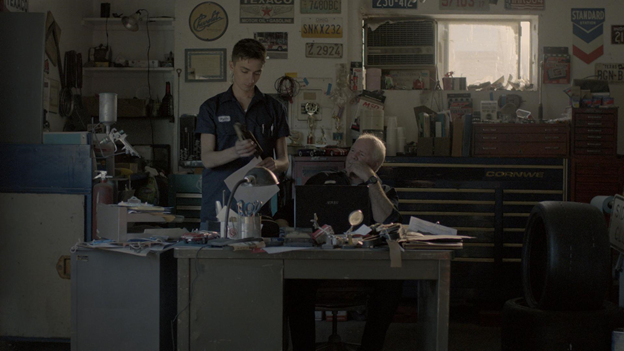
Did Jesse have any previous experiences with being a mechanic?
They had some experience working for their father’s plumbing business. So Jesse had used a drill before, but they didn’t have experience being a mechanic.
What about the rest of the crew? Were they entirely composed of AFI students?
It was a mix of AFI and outside crew. The key crew were all AFI. We had an outside producer, but otherwise it was mostly AFI.
Can you talk about the collaboration with your DP?
I had worked with Robert Nachman on a first year AFI project, so we had a good collaborative process. We went through the emotional beats and discussed the visual language based around that. One of the important decisions you make when working with a DP is your aspect ratio, and for this particular film we picked 4:3.
That was my big question, since you’re the only 4:3 finalist!
Yeah, we actually use two aspect ratios, because when she’s dancing it goes out to 1:85.
Oh wow, I didn’t even notice!
I’m glad you didn’t! But yeah, we felt that 4:3 would lend itself to the portraiture of the character, since the film is so much about this one person and what’s going on in her head. When Ryan goes dancing, her experience of the world is more open and expansive, so the aspect ratio reflects that.
I really loved the cinematography and have seen so many shorts shot in 4:3 that don’t really take advantage of the aspect ratio, and more specifically what I enjoyed is that you pull the camera back a lot and get to inhabit the space.
Yeah, exactly. And going back to the process of working with my DP, we obviously did some extensive blocking work and drew overheads for some of the more complicated scenes. We really wanted to capture the mechanics’ work as accurately as possible, so we had a mechanics consultant, who was also the location owner, and incidentally, she also happened to also be a transwoman.
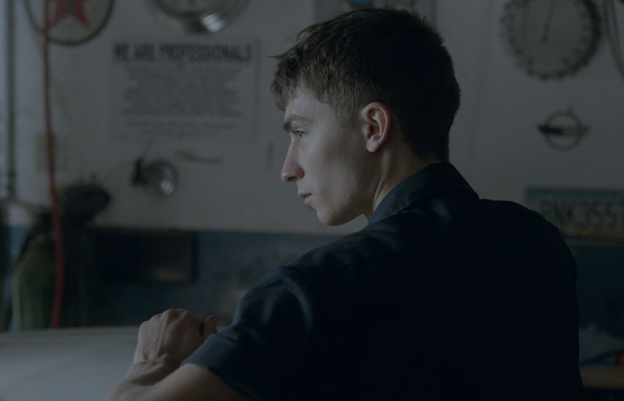
Oh really, that’s amazing!
It was such a coincidence and she was so generous with her time.
Where was the autoshop?
It’s in Santa Clarita. We searched for autoshops within the TMZ and found this spot.
How many days did you shoot at each location?
Three days at the autoshop, and then two different days for the two warehouse locations. Overall it was four-and-a-half days.
Obviously you have your festival run going, but do you have any feature plans?
We had our world premiere at Clermont-Ferrand in February (which was an incredible festival experience with such an international selection) and we’re in the second half of our festival run now. Lately I’ve been writing a feature that also has queer content, but is not related to the short film. I’ve also been working on a TV pilot that deals with the relationship between humans and the environment.
Amazing. Well thank you for sitting down and talking!
Of course. Thank you!
Catch MILLER & SON at the festival circuit and keep your eyes peeled for more of Asher’s work in the future!



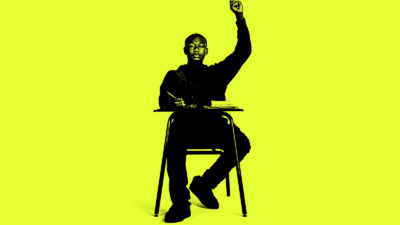


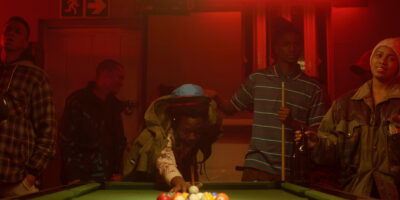

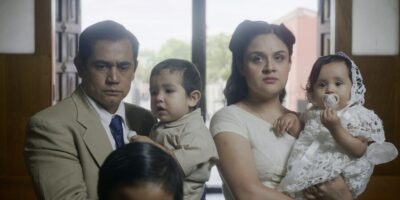
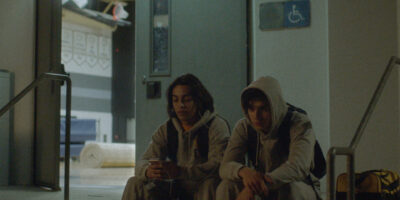
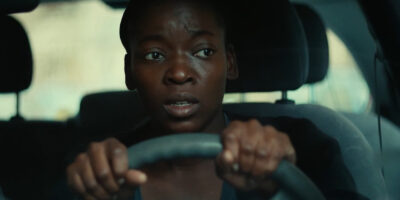
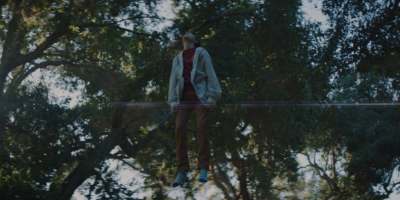

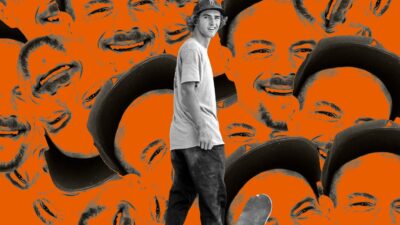


Comments